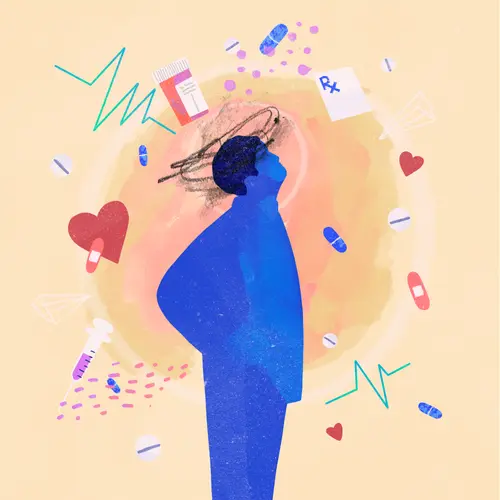If you or someone you care about has HIV, understanding HIV basics and what to expect can help you keep yourself and others in your life healthy. There’s no cure for HIV. But there are effective treatments that allow for a healthy life.
When you don’t get treatment for HIV or don’t take your medicines as prescribed, the infection will get worse over time. Untreated HIV generally progresses through different stages and, eventually, to AIDS.
While symptoms can vary from one person to the next, doctors recognize these three stages of HIV:
- Acute HIV
- Chronic HIV
- Acquired immunodeficiency syndrome (AIDS)
Stage 1: Acute HIV Infection
This is the first stage of an HIV infection. It starts about 2 to 4 weeks after the virus enters your body and lasts about 2 weeks. Symptoms in this early stage are similar to the flu. They include:
- Fever
- Headache
- Rash
- Chills
- Night sweats
- Muscle and joint aches
- Sore throat
- Fatigue
- Swollen lymph nodes
- Mouth ulcers
- Upset stomach
Inside your body, the virus is making lots of copies of itself and spreading to all your cells. The virus attacks your infection-fighting immune cells called CD4 cells. It’s this interaction between the virus and your immune system that causes the symptoms.
At this stage, you have lots of HIV in your blood. As a result, it’s easy for you to spread the virus to another person. If you find out you’ve got an acute HIV infection, it’s a good idea to start treatment right away to get the infection under control.
Stage 2: Chronic HIV Infection
Other names for this stage are the asymptomatic stage or clinical latency. At this stage, you still have the virus in your body but at low levels. It’s possible you won’t notice any symptoms. But as long as the virus is at detectable levels, you can pass the infection to another person.
Without treatment, this stage can last 10 years or longer. Some people will get worse and progress to the next stage faster than others. If you take medicine, this stage can last for a long time. You may never move to the next stage.
Stage 3: AIDS
When a chronic HIV infection moves on to AIDS, the amount of HIV in the blood shoots up and the amount of your infection-fighting immune cells drops. Doctors diagnose AIDS when these cells, called CD4 cells, drop below 200 per cubic millimeter of blood.
This damage to your immune system puts you at risk for other infections and illnesses. The high level of virus in your blood also makes it especially easy for you to pass the virus to another person.
Symptoms of stage 3 HIV infection or AIDS include:
- Weight loss
- Chronic diarrhea
- Night sweats
- Fever
- Cough
- Mouth and skin problems
- Other infections
If you have AIDS, get treatment right away. Medicine can still get HIV back under control and help with other AIDS-related infections. Without treatment, people with AIDS often live for about 3 years.

